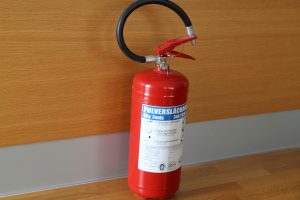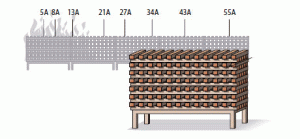Fire – one of the last things we want in the forest. The summer has arrived in the northern hemisphere, that means also here in Sweden. Recently we wrote about the two new aircraft that, at last, were placed here in the country. They have already been useful.
Fire season causes sleepless nights
Until last Christmas, I was selling scarifiers for forestry. This type of machine is often blamed for causing fires, and sometimes they do. The big wildfire in mid-Sweden in 2014 was actually lit by one of those machines.
Not much good came out of that fire, except for one thing; After that, everyone working in Swedish forestry is very cautious. Of the wildfires in Sweden in 2018, no fires were lit by forest machines. The awareness of the risks is huge. As good as no risks are taken by the Swedish forest machine operators nowadays.
A former customer of mine told me the other day: “I woke up at 1 a.m. and had to go to the forest to start working (scarifying)” I asked why? “It was raining” he replied. He simply has to use every minute when the risks of fire are minimal.
What if shit happens?
The machine itself can catch fire. As being an experienced machine operator, I have, of course, managed to lose a machine to the flames. It was an old Kockums 84-32 (or similar) that caught fire on my very first, and last, trip with it. I didn´t even get to the site. I pulled the levers for the extinguishers, the fire went down – for ten seconds. An hour later the machine was gone. The machine was luckily standing on the road so only one tree, spruce, caught fire.
Be well equipped
The old Kockums had no extra fire extinguishers, apart from those in the sprinkler system. Back then, in 1992, that was not a demand. How about that today?
I guess it´s different in different countries, and sometimes between different states within a country. The question is; How many do you need? What type should you use?
Portable fire extinguishers
The classification of fire extinguishers differs a little bit as you can see in the table below where different fire types and extinguishers are described.
| Description | Europe | USA | Australia |
| Combustible materials (wood, paper, fabric, etc) | Class A | Class A | Class A |
| Flammable liquids | Class B | Class B | Class B |
| Flammable gases | Class C | Class B | Class C |
There are also classes for electrical fires, metal fires and fires in cooking oils and fat, but those classes are normally not mentioned when it comes to logging equipment.
Efficiency classification
The efficiency of the class A and B extinguishers is measured according to a European standard, SS-EN 3-7. In the US the methods are different compared to what is described here below but basically, they are more or less the same.
Class A-fires
A bonfire is built with the measurements 5 x 5 decimeters (0,5 x 0,5 meters) and a length that corresponds with the extinguisher’s efficiency class. Example: If the extinguisher has class 13A (A, as in the table above) it should put out a wooden bonfire that is 5 x 5 x 13 decimeters, or 0,5 x 0,5 x 1,3 meters.
The efficiency classes for class A-fires are:
5A
13A
21A
27A
34A
43A
55A
Class B-fires
A test-fire for class B-fires, flammable liquids, is a round metal vessel that is filled with 2/3 heptane and 1/3 water. The figure in the classification class is the total volume of fluid, in liters, in the vessel and also the radius (in dm) of the bonfire square (r2). Example: A class 113B extinguisher must be able to put out a fire of 113 liters fluid in a vessel that is 113 (dm radius) x 3,14 = 355 dm2 = 3,55 m2 big. That means that the depth in the vessel is only approximately 30 millimeters.
The efficiency classes for class B-fires are:
21B
34B
55B
70B
89B
113B
144B
183B
233B
Recommendations
There are different recommendations when it comes to what extinguishers to use for logging equipment. It´s natural that it differs between different countries, but also within countries there can be differences. As for an example in Sweden.
Theoretically, you have three types of extinguishers to choose from: water, dry powder and foam. On a forest machine, you have to count on that both the machine and the forest can catch fire, so water is probably not an alternative.
The general recommendation for forest machines in Sweden is 2 pc. 6 kg dry powder extinguishers. Both should be in, at least, classes 43A and 233B. Apart from the handheld extinguishers, the machine should be equipped with a built-in sprinkler system.
The Forestry Research Institute of Sweden, Skogforsk, recommends 2 pc. 9 liters foam extinguishers in classes 55A and 233B. An exception is for scarifiers that should have 6 of those extinguishers.
The Swedish forestry has agreed to go for the Skogforsk recommendation.
Foam vs. powder
Which type of extinguisher is actually most suitable for logging equipment? As mentioned above, even scientists have different views of this.
Foam
Foam extinguishers are more suitable for fighting fires in absorbent materials such as moss and wood. The foam is more penetrating and creates a layer of film. It´s also easier to distribute over the fire under windy conditions. Cleaning up after the use is quite easy.
The downside with foam is that you will need bigger extinguishers to get the same effect compared to powder. If you e.g. have to carry the extinguisher a long distance that might be an issue. The foam extinguishers are not suitable under freezing conditions as the base in the foam is water.
It is being discussed about the environmental effects of foam from extinguishers. Older types of foam contained so called per- and poly fluoroalkyl substances, PFAS. The PFAS are hazardous to human health and are highly persistent in the environment, like in groundwater. Because of this, in some firefighting training sites in Sweden, “real” foam has been forbidden and replaced with special foam for training.
As there are over 3 000 different chemicals in PFAS it´s difficult to say how hazardous today´s foam extinguishers actually are. The manufacturers of fire extinguishing foam keep their recipes to themselves which makes it even harder to examine.
Powder
Powder, or dry powder extinguishers are approved for most types of fires which makes them very flexible. They are more efficient in putting out fires and therefore you can have a smaller extinguisher compared to a foam extinguisher. They are not sensitive to temperature.
A downside is that they are sensitive to the wind when you use them. Also, the powder affects the visibility during the extinguishing operation and it is difficult to clean up after it´s been used.
Summary
What kind of extinguisher you have may be of less importance, as long as you have them. Most important is to act quickly when a fire occurs, with whatever you have. A rake, water, soft drink, coffee, a blanket if the extinguishers are too far away (which they hopefully not are). If the fire starts spreading it could turn bad.
Preventing fire by being cautious on the weather, not to use chains or tracks in dry and stony terrain and in worst case park the machine to wait for rain are maybe the best things to do to be safe.
Photos: Per Jonsson
Illustrations: MSB
Sources: Skogforsk (the Forestry Research Institute of Sweden), Svebra, MSB (the Swedish Civil Contingencies Agency), Wikipedia, Presto, Naturvårdsverket (Swedish Environmental Protection Agency)















